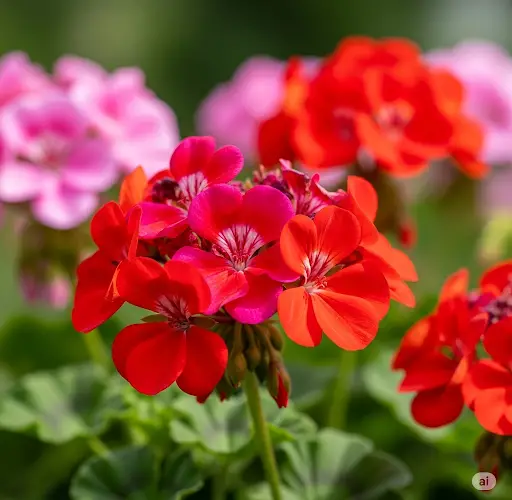Geraniums are one of the most popular flowering plants for windowsills, balconies, and gardens. They are loved for their vivid blossoms, resilience, and minimal care requirements. However, winter can pose serious challenges for even the healthiest geraniums. Without proper seasonal care, leaves begin to yellow, blooms stop developing, and overall plant vitality declines.
If your geraniums look tired, faded, or on the verge of wilting this winter, don’t give up on them just yet. A simple, effective winter care routine can prevent leaf yellowing, support flower health, and bring even the weakest plant back to life.
Here’s how to properly care for geraniums during the colder months, using an easy natural remedy and a few key adjustments that can make a big difference.
Why Geraniums Suffer in Winter
In winter, geraniums are vulnerable to several stress factors:
-
Reduced sunlight leads to poor photosynthesis
-
Cooler indoor temperatures can shock tropical-origin plants
-
Overwatering or poor drainage causes root rot
-
Nutrient deficiencies show up as yellowing or pale leaves
-
Dry indoor air from heating systems dehydrates the plant
All these factors combine to weaken the plant and reduce flowering. Fortunately, a few targeted steps can reverse the damage and keep your geranium thriving throughout winter.
The Winter Rescue Solution for Geraniums
To keep your geraniums healthy and green during winter, use this natural tonic once every two weeks. It’s an easy DIY liquid fertilizer that delivers the nutrients your plants need without overloading them.
Ingredients:
-
1 liter of room-temperature water
-
1 tablespoon of milk (whole or skim)
-
1 teaspoon of honey
-
Optional: a pinch of cinnamon or a few drops of aloe vera juice
Why it works:
-
Milk contains calcium, potassium, and protein, which help strengthen cell walls and prevent nutrient deficiencies.
-
Honey acts as a natural antibacterial agent while feeding soil microbes, which in turn support root health.
-
Cinnamon helps prevent fungal infections and root rot.
-
Aloe vera provides natural plant hormones and stress-reducing compounds.
How to Apply
-
Mix all ingredients thoroughly in a container.
-
Water the geranium with this solution at the root zone. Avoid wetting the leaves.
-
Use once every 14–21 days during winter.
This gentle feeding schedule gives the plant a mild nutritional boost without encouraging excessive growth, which could stress it under low-light conditions.
Additional Tips for Winter Geranium Care
While feeding is essential, it’s just one part of a broader care strategy. Here are other important winter adjustments:
1. Lighting
-
Move your plant to the brightest window available—ideally south-facing.
-
If natural light is limited, consider using a small LED grow light. Geraniums need at least 4–6 hours of light daily.
2. Temperature
-
Keep room temperatures between 15–20°C (59–68°F).
-
Avoid placing geraniums near cold drafts or directly above radiators.
3. Watering
-
Water sparingly in winter. Let the top 2–3 cm of soil dry out between waterings.
-
Ensure the pot has drainage holes to prevent water accumulation.
4. Humidity
-
If your indoor air is very dry due to heating, lightly mist the plant once or twice a week or place a small dish of water nearby to increase humidity.
5. Pruning
-
Remove yellow or dead leaves promptly.
-
If the plant is leggy, cut back stems slightly to encourage a more compact shape and reduce energy loss.
Signs of Recovery to Watch For
When your geranium starts responding to care, you’ll see:
-
Leaves becoming greener and more vibrant
-
Less leaf drop and fewer yellow tips
-
Small new leaves appearing at stem nodes
-
A firmer, more upright stem structure
-
New flower buds forming, even in winter (in warm, bright conditions)
If you follow this routine consistently, your plant can remain healthy throughout the cold season and be ready to bloom vigorously in spring.
Bonus Tip: Preparing for Spring Growth
By late February or early March, begin gradually increasing watering and feeding frequency. You can also repot the plant if it has outgrown its container or refresh the top layer of soil with nutrient-rich compost. This will prepare the geranium for a new growth cycle once sunlight and temperatures increase.
Final Thoughts
Winter doesn’t have to be a death sentence for your geraniums. With the right blend of gentle feeding, proper placement, and mindful care, even the weakest plant can revive. The transformation from yellowing stems to lush green leaves and fresh blooms can happen faster than expected—all with just a little extra attention.
Try this simple homemade tonic and winter routine, and watch your geranium not just survive but thrive through the cold months. It’s a small effort with big rewards, ensuring a healthy, beautiful plant year-round.



